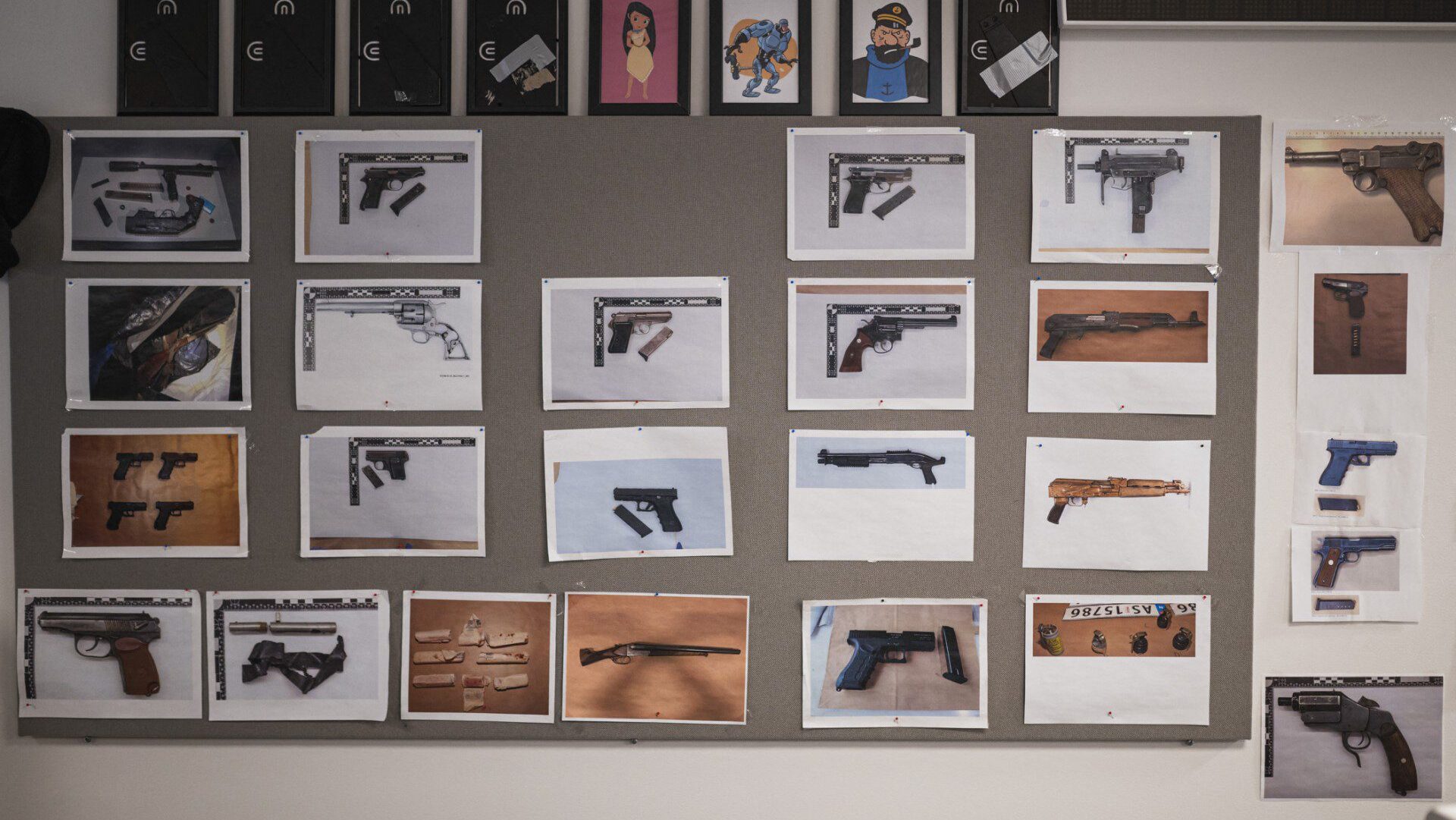
Photo: JONATHAN NACKSTRAND / AFP
A report from Sweden’s Crime Prevention Council (BRÅ), commissioned by the government to study the increase in gun violence, completely fails to consider mass migration or the ethnicity or culture of shooters in its analysis.
Henrik Angerbrandt, one of the authors behind the study, told news outlet Samnytt that the study did not include the background of perpetrators as it was not considered interesting for the report: “We have not looked at the individual level. We have not looked at foreign backgrounds, and we have generally not examined socioeconomic factors.”
Last year, Sweden registered 363 shooting incidents (including 53 fatalities and 109 injured)—the highest numbers in Europe, in a country that once had the lowest firearm crime rate per capita. In contrast, the other three Nordic countries—which have all had significantly more restrictive migration policies—registered only six fatal shootings combined in 2023.
While Swedish authorities have shied away from identifying poorly controlled migration as a cause of increased violent crime, their Danish counterparts are upfront about it:
“Sweden is a frightening example of what happens when too little attention is given to immigration and law enforcement policies,” Danish MP Preben Bang Henriksen told daily paper Aftonbladet. “Neither the conservative nor the Social Democratic governments have addressed the problem.”
Per Gudmundson, former editorial writer for center-right daily SvD, commented on X that
The BRÅ report is clinically free from anything related to immigrant issues. A 100-page overview of gun violence, but without words like ‘immigrant,’ ‘origin,’ ‘foreign,’ ‘descent,’ ‘Somali.’ There is no analysis at all of the suspect register.
Gudmundson—a fairly lone critical voice on the Swedish establishment media scene—questions why the study completely ignores the immigration perspective, calling it “unreasonable” in light of the fact that other criminologists “have noted that origin has explanatory value.” He continues:
I can’t shake the feeling that BRÅ has made a conscious choice. They have opted out of the difficult part of the issue. Unfortunately, this affects the measures that are proposed, meaning the usefulness for the client (the government!).
The task set out for the study (The increase in gun violence in Sweden) was to “investigate how shifts in norms within the criminal environment can be linked to the development of conflicts between and within criminal networks [and] map the development of gun violence in Sweden since the mid-2000s when the increase began.” The focus of the investigation, the brief says, should be on
identifying trend breaks, including identifying incidents that may have contributed to the increase or change in the nature of violence, and analyzing which factors may have influenced the shift in norms within the criminal environment.
Apparently, the influx of criminal individuals and gangs was not considered to be among those “incidents” and “factors.”
In the 120-page report, the authors identify general shifts in the nature of gun violence in Sweden. A fairly structured and regimented use of guns by hierarchically organized criminal groups in the mid-2000s changed to gun violence connected with neighborhood-based criminal organizations in the 2010s. This shift, the report says, was connected with changes in the illegal drug trade, “where territorial control of sales gradually emerged” and the “change in organizational structure” led to the use of violence not being regulated as strictly as before. While shootings previously involved“leading individuals” and were sanctioned by the gang, they began involving lower-level gangsters and occurring “on more individual initiatives.”
In the second half of the 2010s, the neighborhood groups fragmented and guns started being used in personal conflicts as well as in criminal ‘business.’ This is also when Sweden started seeing ‘guns for hire’—criminal groups whose primary source of income was contract killings. During the 2020s, the report says,
A new type of perpetrator has emerged—young teenagers with only a weak connection to the instigators. They also do not always have any personal interest in the conflicts related to the shootings. Compared to earlier periods, there seems to have been a devaluation of the status associated with carrying out certain types of shootings, and these are assigned to very young perpetrators with limited experience in the criminal environment.
As we previously reported, these “child soldiers” have become a grave concern for neighboring countries as well.
BRÅ was also tasked to “propose measures that could help reverse the negative trend.” Among the measures proposed by the study are increasing the percentage of solved crimes, “dialogue,” and “psychosocial interventions to prevent and counteract gang crime among children and youth.”
The Crime Prevention Council BRÅ, a government agency, “works to reduce crime and increase safety in society” by “presenting facts and spreading knowledge about crime, law enforcement, and crime prevention efforts.”
